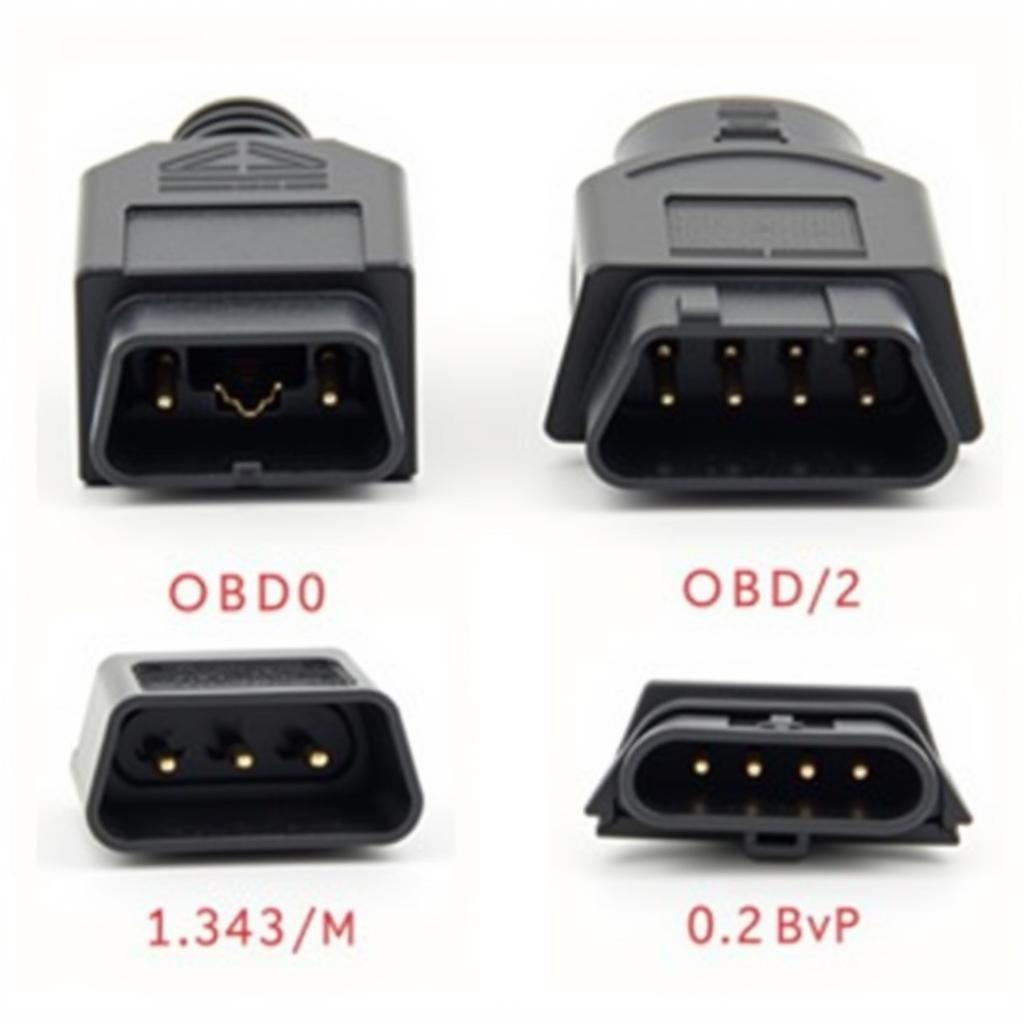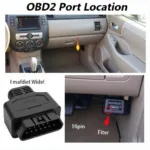The Rywire OBD0 to OBD2 conversion harness is a popular choice for enthusiasts looking to retrofit newer engine management systems into older vehicles. This guide delves into the intricacies of this conversion, exploring its benefits, challenges, and providing a step-by-step walkthrough of the process.
Understanding OBD0 and OBD2 Systems
Before diving into the conversion, it’s crucial to grasp the fundamental differences between OBD0 and OBD2 systems.
OBD0 (On-Board Diagnostics 0), prevalent in vehicles manufactured before 1996, represents an early iteration of engine diagnostics. It relies on rudimentary sensors and lacks standardized diagnostic connectors and codes.
OBD2 (On-Board Diagnostics 2), mandated in the US for vehicles from 1996 onwards, introduced a universal diagnostic connector, standardized trouble codes, and more sophisticated emission control systems.
Why Convert from OBD0 to OBD2?
Converting from OBD0 to OBD2 offers several advantages:
- Enhanced Diagnostics: OBD2’s standardized codes and readily available scanners simplify troubleshooting and repair.
- Improved Engine Performance: Access to advanced engine management systems and tuning options can unlock increased power and fuel efficiency.
- Emissions Compliance: OBD2 systems contribute to meeting modern emissions regulations.
- Wider Compatibility: Integration of newer aftermarket components becomes seamless.
The Role of a Rywire OBD0 to OBD2 Conversion Harness
A Rywire harness simplifies the complex task of adapting an OBD2 engine management system to an OBD0 vehicle. It acts as the bridge between the two systems, ensuring proper signal transmission between the engine, sensors, and the ECU.
Step-by-Step Conversion Process
While the specific steps may vary depending on the vehicle and engine combination, the general process involves:
- Preparation: Disconnect the battery, gather necessary tools, and consult your vehicle and harness-specific wiring diagrams.
- Harness Installation: Connect the Rywire harness to the engine bay’s existing wiring, ECU, and OBD2 diagnostic port.
- Sensor Integration: Install any required OBD2-compatible sensors, ensuring they align with the new engine management system.
- ECU Configuration: Program the OBD2 ECU with the appropriate settings for your engine and vehicle.
- Testing and Calibration: Thoroughly test all connections and calibrate the engine management system for optimal performance.
Potential Challenges and Troubleshooting Tips
- Wiring Complications: Meticulously following the wiring diagrams is crucial to avoid electrical issues.
- Sensor Compatibility: Ensuring all sensors meet OBD2 standards and are compatible with the new ECU is essential.
- ECU Programming: Proper ECU programming with vehicle-specific parameters is crucial for smooth operation.
Conclusion
Converting from OBD0 to OBD2 with a Rywire harness offers numerous benefits, from enhanced diagnostics to improved performance. By carefully following the steps outlined in this guide and addressing potential challenges, you can successfully bridge the gap between these two generations of engine management systems, unlocking a new level of control and sophistication for your vehicle.


